Technology Observatory from 28 of July to 3rd of August
This week's Technology Observatory brings you the following stories:
● Amazon launches its own customizable 3D printing store
● Amazon may sell credit card readers for smartphones for just $9.99
● A dedicated Material Design website for Google Docs, Sheets and Slides
● Huawei's shipments jump 62% in the first half of the year
● Twitter's Q2 2014 financial earnings
● Netflix could disembark in Spain in late 2015
● Samsung releases its Galaxy S5 mini in Spain
● A look at the HTC One with Windows Phone
● Apple finalizes the acquisition of Beats, with the latter's products already on sale at Apple stores
● The 19 most hotly awaited gadgets over the rest of 2014
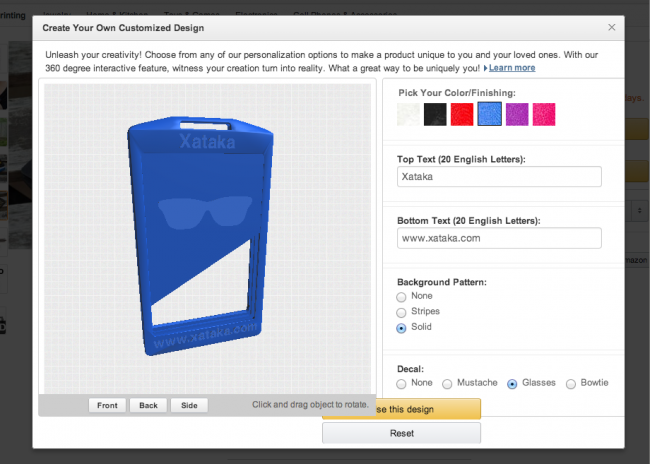
Amazon takes the leap into 3D printing. The e-commerce behemoth has announced the launch of its own 3D product store, with a dedicated catalog already available via its website. The service is called 3D Printing Store, with users being able to choose from the catalog and customize the products to suit their needs. The current product categories include accessories, toys and decor. For example, as pictured above, users can design their own plastic card holders, selecting the color, text and logo. There are also dolls (which you can customize), puzzles and even initialed cufflinks. Amazon says there are more than 200 products that can be printed "on demand". However, as yet customers cannot upload their own designs. The company has not said whether it has plans to support this in future. As usual with Amazon announcements from the other side of the Atlantic, we in Spain will have to wait as the firm does not yet deliver these products overseas. However, if the idea catches on in the U.S. we can expect to see 3D printing services on the rest of Amazon's international stores.
After a year of rumors and leaks, Amazon may be ready to officially launch a device similar to Square and PayPal Here, which it hopes to rival, that connects to Amazon Fire smartphones and Kindle tablets to create a point-of-sale system to process payments. The reader is set to be affordable and easy to operate, meaning consumers can use them from the comfort of their own homes. The device is called Amazon Card Reader and could hit the stores in the week of August 11, priced at $9.99 each. Less than a week ago Amazon launched its own digital mobile wallet app, called Amazon Wallet, for which the new device would make the ideal partner, supporting optimal functionality and security. Speaking of security, 9to5mac, which leaked details of the imminent launch of the brand new reader, reports that the development team may also be working on other hardware tools using biometrics to approve transactions, such as a new digital fingerprint reader, which as well as adding extra security guarantees would also give Amazon an edge in the online wallets and payments market.
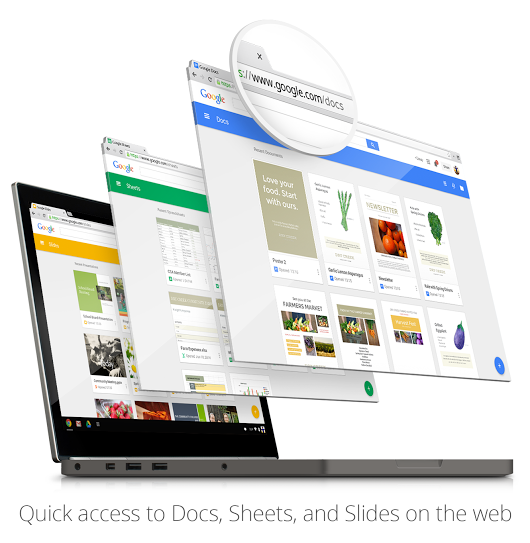
Ever since Material Design was unveiled at Google I/O, we have been hoping to see the format rolled out to the full range of services. The new styles and colors have gradually been extended to Google applications, with the latest to benefit being Chrome Beta for Android, and just a few weeks ago the office software suite was also updated: Docs, Sheets… and even Drive. The web version of Drive is getting a revamp for all users (if yours hasn't been yet, it will be soon) and now the new format has been deployed on the main sites for Docs (documents), Sheets (spreadsheets) and Slides(presentations), with far simpler URLs:
● Docs: Google.com/docs
● Sheets: Google.com/sheets
● Slides: Google.com/slides
When opening each you will see a list and preview of recently opened or edited files, all in a highly visual format. To create a new document, all you have to do is click the + button at the bottom left corner (as we have already seen in Android for Google+ apps, Docs, etc.), all in a very simple interface, coherent with the Material Designs style that we can expect to see over the next few months. Remember that Google's suite fully supports editing of Word, Excel and PowerPoint Office documents directly via Docs, Sheets and Slides, which along with the Chrome extension means they can even be edited offline. This is unquestionably a major step forward, rendering these web applications even more powerful and coming as a real boon for users of ChromeOS.
Good news for one of China's leading manufacturers. Huawei has posted excellent market figures. The firm reported far from negligible double-digit growth, with shipments (but not revenue) jumping 62% in the first half of the year compared to the same period last year. The market share chart featuring Xiaomi figures shows that the company accounted for just 10% of the Chinese market, while units shipped stood at 34.3 million. This is due to Huawei having a stronger position in foreign markets, where its devices are readily available. 20.7 million units were shipped in the second half of the year, while close to 40% were accounted for by exports outside of China. Among other benefits, this has seen the firm position itself as the third largest manufacturer worldwide, with quality products such as the Ascend P7.
Twitter released its financial reports, revealing revenues, profits and, most importantly, the rate of active user growth over the last three months. The figures were fairly satisfactory for investors, who have largely faced a series of disappointments since Twitter was publically listed. During Q2 2014 Twitter's active user base grew by 16 million, reaching a total of 271 million active users month on month. This is Twitter's key market in terms of advertising and its main revenue source. Twitter often boasts of having several hundred million more users, but when all is said and done only active users matter. And the figure remains in growth, albeit at a slower rate than Twitter would like. It has become clear over the last two quarters that the pace of active user growth is trailing off. In Q1 2014 the platform had 255 million active users, and while growth of just 16 million in three months was not what the social network had hoped for, it was enough to keep investors happy, particularly as there was an uptick in activity levels on Twitter during the period, although this may well have been driven by the FIFA World Cup held in June and July. Another important aspect revealed in Twitter's financial reporting was that no less than 78% of its 271 million active users operate via mobile devices. Most users of the social media platform prefer to connect via a smartphone or tablet, which is not the case for its peers such as Facebook. Twitter's numbers show just how many messages were posted over the course of the football World Cup, particularly during the Brazil vs. Germany semi-final and Germany vs. Argentina final, which became the most "tweeted" sporting event in history, with 35.6 million messages posted and reaching peaks of 600 thousand tweets per minute. This great sporting event drove up the number of active Twitter users and no doubt buoyed new profile figures. This is precisely why investors are taking something of a cautious approach to Twitter's Q2 2014 financial report, which while promising may simply reflect a peak in the year linked to a major global sporting event. Finally, in terms of revenue and earnings, Twitter posted revenue of 312 million dollars and net profit of 15 million dollars, with earnings per share standing at 2 cents. Analysts at Twitter forecast revenue of between €330 and €340mn for Q3 2014.
Netflix is one of the most popular video streaming services around. It was founded in the United States in 1997, but didn't really become a hit until some ten years later when broadband became widespread and streaming emerged as more practical than downloads. We have discussed Netflix and its expansion in Europe on several occasions, and just last week the firm announced that it would launch services in six European countries, although it always seems to overlook Spain. Netflix has always had a skeptical view of launching in the European market, particularly in Spain, where licensing complexities make it much harder to offer as complete a catalog of products as it does in the U.S. However, the competition has been making ground on the old continent so Netflix is finally mobilizing and readying to launch in six countries. Sources close to the firm say there are also plans for a "second wave" in the final quarter of 2015. The sources have only specified that Spain would be included in this second wave, without revealing any other nations or how many there would be. The real reason why it has taken so long for Netflix to disembark in Spain is unknown, although the Internet Users Association once put it down to “extortionate copyright royalties”, far higher than in neighboring countries. In the end it always comes down to the same thing; price. Such services have failed to catch on in Spain because the fee is usually considered too steep for the content. Hopefully Netflix will manage to change all this, providing users with quality service at a reasonable price.
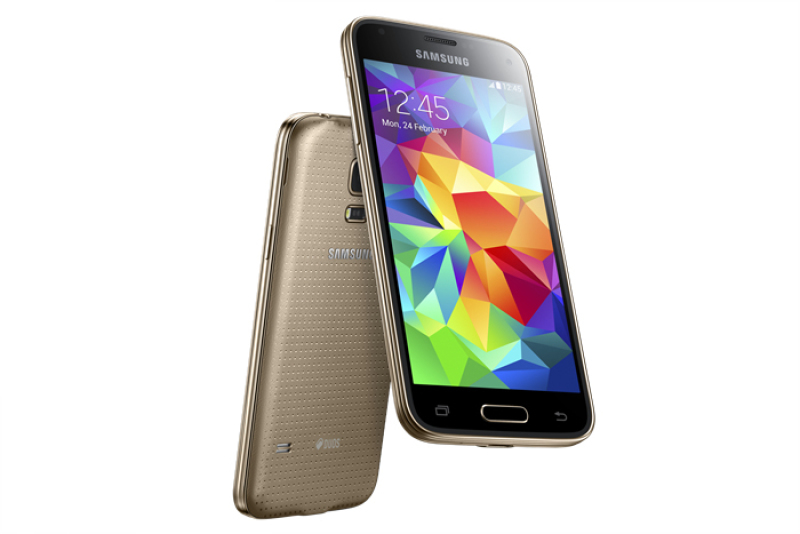
The dinky device is here. Samsung has officially confirmed that the new Galaxy S5 mini will be sold in Spain, providing full details on its availability. But first let's briefly look at the device's specifications. If your memory is good, you'll remember that the S5 mini features a Super AMOLED 4.5-inch (1,280 x 720 pixel) screen, a 1.4 GHz quad-core processor and 1.5 GB of RAM. It comes with 16 GB of storage, an 8 megapixel sensor as primary camera and plenty of features, such as a heart rate sensor, fingerprint reader and IP67 certification. The table shows a comparison against its older sibling. The 9.1 millimeter thick body of course makes room for a +GLONASS GPS module, WiFi 802.11 a/b/g/n, NFC (LTE version only), Bluetooth 4.0 LE and a microSD card slot, among other niceties. It carries a 2,100 mAh battery and runs the Android 4.4 operating system. The Galaxy S5 mini will go on sale at a price of 449 euro. The Samsung Galaxy S5 mini will also come in four colors: black, white, blue and gold.
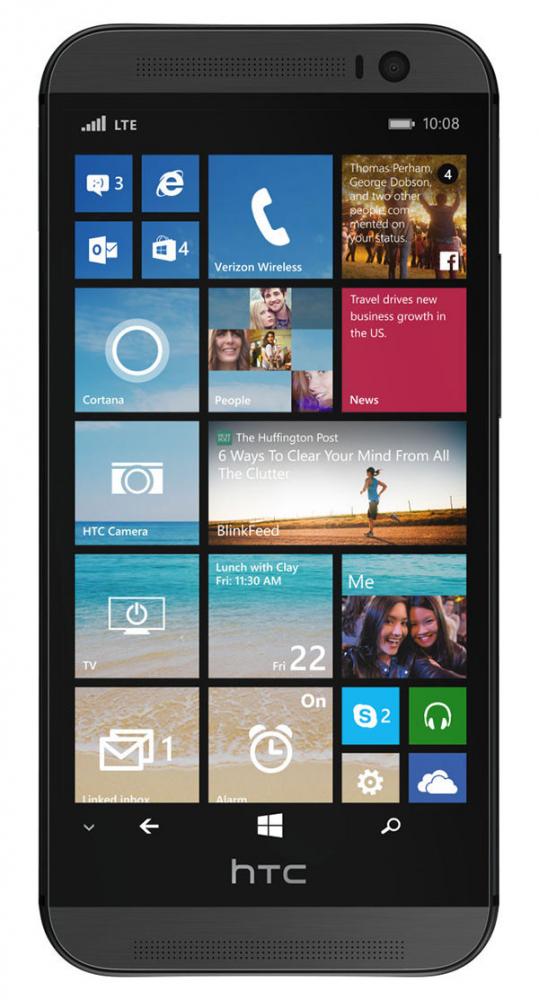
The HTC One M8 with the Windows Phone operating system really exists. Rumors swirled all week that such a device was in the pipeline and now we have proof: the telecoms operator Verizon showed a photo of the phone on its website. It looks identical to the Android version, which is a good thing, as the HTC design and quality levels are among the most attractive aspects of the device. Of course the browsing buttons are different, with the new version featuring Microsoft system buttons. We have not yet heard what internal hardware, screen, cameras or connectivity it will have, but it is likely to share many aspects with the Android model. No official announcements have been made, but things are likely to move quickly as of now. Some specialist media sources say the device will be unveiled on August 19 in the U.S. The photos show a "tile" screen with the date of August 22, which may indicate when it will be presented to the public or go on sale. We hope the phone is eventually made available in the rest of the world, as the platform needs it. The device would come as a breath of fresh air in a segment dominated by Nokia Lumia, which accounts for 95% of sales. HTC has been approached for confirmation of the reports and photos, but the company has refused to comment on the "One (M8) for Windows".
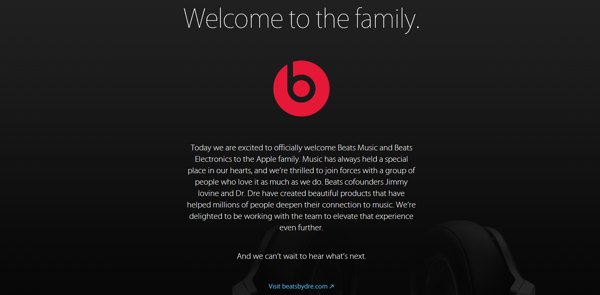
The above is a screenshot from the Apple website, extending a big welcome to Beats Music and Beats Electronics. The two have now joined the Apple family after the latter acquired them for more than 3 billion dollars, and after a number of legal hurdles linked to size of the purchase were overcome. The Beats Music and Beats Electronics websites also trumpeted the news. In fact, the Beats virtual store (http://www.beatsbydre.com/), where previously you could only order the high quality headphones and devices designed by the company, founded by Jimmy Iovine and the rapper Dr. Dre (who now join the Apple team, along with other former Beats employees), has been updated to include direct links to the Apple Store for payments and shipping. In short, the merger of the two giants is taking shape at last. Of course, it is worth remembering that Apple did not buy Beats just to sell its headphones. It also wanted to tie in the high-quality approaches of both companies and to get its hands on Beats Music, which Apple hopes will shake up the music business, this time via subscription audio streaming with high-fidelity sound. In fact, if you want to check out any devices before making a purchase, we recommend you look at the Beats page, which is better structured.
The first half of 2014 was busy in terms of new technology and gadgets reaching the market. Mobility was again key, with smartphones leading the way, but there have also been plenty of developments in areas such as quantification and wearable computing. So what do the next few months have in store? The team at Xataka has provided an overview of likely forthcoming product launches. Again there are a lot of smartphones on the horizon, while one major firm in particular has promised "the best product pipeline in 25 years". This pledge was made by none other than Eddy Cue, Senior Vice President of Apple. The expectations are high for Apple, which had something of a subdued first half of the year but seems to be keeping something big up its sleeve for the second half. The developers conference offered glimpses into the Cupertino firm's particular approach to convergence (together yet separate) and also touched on some highly promising areas such as health and home automation. But of course there are plenty of other devices and manufacturers with surprises in store for the coming months. The looming Christmas season, the strongest period for all firms, means they will all be looking to make a splash as consumer product sales peak. Here's what to expect.
iPhone 6
We will see the new member of the Apple smartphone family almost certainly this autumn. The iPhone 6 (or whatever it will be called) promises one major change: a far larger screen diagonal, in accordance with the times. There has been talk for some time of two models, 4.7 and 5.5 inches (we'll have to see what screen resolutions they offer), but these won't be the only new aspect: the Sapphire screen (or at least based on Sapphire) is also set to impress.
New iPad
A revamp of the Apple smartphone range may well come alongside new tablet launches. Sales figures over the last few months show a clear decline, so Apple will surely have prepared something special to give the segment a shot in the arm. Rumors of potential successors to the iPad Air failed to gain traction, but there has been talk of new processors (the hypothetical A8 processor, which is set to be fitted in the more powerful iPhones), as well as improved rear cameras and TouchID sensors, which were already debuted in the iPhone 5S. Plenty of market observers expect specific new features in iOS 8 for the iPad, particularly split screen mode, which has not yet appeared in public beta versions but may provide the wow factor for the new models. It will be interesting to see what direction the firm takes with iPad minis, which are already under threat from Android phablets. Indeed, a mini tablet makes less sense if the firm ends up manufacturing 5.5-inch iPhones.
iWatch
This is another hotly anticipated product this year. The Apple smartwatch seems a safe bet according to recent rumors (a patent was even granted not long ago), and many identify this as an area where Apple could really shake up the market, just as it did with iPods when MP3 players were still finding their feet. There has been all kinds of buzz about these future Apple devices, suggesting the design will be stunning, but they could really thrive in areas such as health. Apple has been hiring biomedical experts and revealed that iOS 8 would feature a HealthKit tool, but the Cupertino firm may well have further surprises in store should it eventually launch such a product.
AppleTV
The company's bid to establish itself in home automation could manifest itself in a revamped AppleTV product, with a likely departure from the current non-smart set-top-box format that plays content from other devices. There are plenty of possibilities. The future product could support iOS games or use a similar remote as the Amazon Fire TV system, harnessing voice recognition and having Siri play a central role. They seem to have ruled out manufacturing a TV with iOS integration, but a smart set-top-box could pave the way to automated home controls via HomeKit.
Samsung Galaxy Note 4
Plenty of market observers were somewhat shocked when the Galaxy Note emerged with what seemed an absurdly enormous 5.3-inch diagonal. But Samsung's gamble on the phablet worked and laid the foundations of what is now a solid market. The average smartphone screen size has grown incessantly and Samsung has remained true to its gambit in subsequent generations of its original phablet. It won't be easy to improve on the excellent Galaxy Note 3. We'll have to wait and see whether the upgrades that Samsung has in store will be more eye-catching than what the Samsung Galaxy S5 added to the Galaxy S4. Among the new features, we are likely to see a 5.7-inch QHD screen, as well as a finger print sensor and maybe 64-bit Snapdragon 805.
Samsung Galaxy Alpha
Samsung may add a high-end model to its current catalog, going one step further than it did with the Samsung Galaxy S5. The latest buzz even has a name for the new model: the Samsung Galaxy Alpha, which would be a direct answer to Apple's iPhone 6. The information heard thus far indicates a model likely to capitalize on the 64-bit Snapdragon 805, but that will truly stand out thanks to a QHD screen (although this didn't do that much for the LG G3) and, attention please, a fully metallic case, giving it that premium feel that many found lacking in the S5.
(Xiaomi) Mi 4
The new high-end smartphone from the Chinese manufacturer is another upcoming major release and is fairly unique in this list, in that it has been officially announced and confirmed. The phone is due to hit the market (China first and foremost) over the next few weeks. The specs (on paper at least) of the (Xiaomi) Mi 4 have already been announced. The company clearly wants to offer a highly polished product in the Mi, and one not dissimilar to the iPhone, which has attracted some criticism. We still have no news of when the device will be available in international markets. Mi's growth has been slow and gradual, but many want the firm's products to be more readily available in the rest of the world, as they have consistently been on the money in their approach to mobility and offering groundbreaking price points for the features carried.
Nexus 6
Some weeks ago there were rumors of the Nexus family's possible demise. However, a Google executive has since confirmed that neither Android Silver nor Android One would threaten the future of Nexus range. The doors therefore remain open for the next generation in the family, the Nexus 6, which we expect to be unveiled before the end of the year. There has been all kinds of conjecture over what format the device will come in, with one particularly surprising possibility emerging: the Nexus 6 could mark a major departure from its predecessors, with a giant leap in terms of screen diagonals, possibly up to 5.9 inches. Such an enormous Nexus could well appeal to plenty of users and would be in line with the phablet trend detailed above.
Nexus 8 (or 9)
Android L is set to be the driving force behind renovation of the Nexus 6, and so too the other hotly awaited product for this year: the Nexus 8, a new tablet that rumors suggest will be manufactured by HTC, with a screen diagonal of up to 8.9 inches to stave off the phablet threat. Very little is known about such a potential device, which may even be called the Nexus 9 and would most likely be intended as a direct rival for Apple's iPad Air. Google's new Android L design may be key to competing in the segment, but as yet too little is known about the tablet, which may even be a convergent device between the Nexus 10 (which hasn't had an update since 2012) and the Nexus 7, last updated in July 2013.
Motorola Moto 360
One smartwatch that has generated plenty of buzz is the Motorola Moto 360, which seems to be hitting the mark in both design (goodbye to the boring square screens) and by fully adapting to the Android Wear platform, which is likely to render its best on future devices from this firm. The Moto 360 was seen in action at the Google I/O, but the company was silent on an official launch date or future availability, which some say will be around September. The price, if a recent lapse from Motorola is anything to go by, will stand around 249 dollars.
Motorola Moto X+1
Motorola surprised the market in recent months with two standout products in terms of value for money. The mid-low and low ends of the market seem to be well covered by the Moto G and Moto E respectively, but what about the high end? That's where the Moto X+1 comes in. The device is set to be a supercharged version of the Moto X, released one year ago, which despite some great features was hindered by a steep price, and still is. Its successor could improve the value for money factor. In fact, the latest version may be presented alongside the Moto 360 discussed above.
Sony Xperia Z3... or Z2 Compact?
A complete revamp of the Sony device range seems unlikely, given that the Z2 has only been on the market for a few months, but media reports suggest that the Japanese manufacturer will unveil a successor before the year is out. More likely perhaps is a release of a scion to the Xperia Z1 Compact, although the latter's modest success means this family of small screen diagonal devices could be under threat, particularly as the market trend is for increasingly larger screens. By the way, the Sony Xperia A2 doesn't count as a successor of the Z1 Compact as far as we're concerned.
Oculus Rift
It's all well and good that Oculus has start providing its prodigious Oculus Rift in versions for developers, thus giving developers a chance to harness its capabilities in their creations. But there are plenty of consumers who want to an introduction to the promising field of virtual reality too. The market has seen a number of contenders emerge, but the consumer version of Oculus Rift has by far generated the most buzz. We are yet to hear a launch date and while we would love to see a version appear before Christmas, we may well have to wait longer. The Oculus Rift DK2 already improved on the previous generation, but executives at Oculus promise that the version for end users will be "far better". Perhaps Facebook's support will speed things up, but we may see nothing new from Oculus over the rest of 2014. In fact, a launch for Christmas 2015 is probably more likely, but there's no harm in hoping.
Microsoft Surface Mini
The launch of the Microsoft Surface Pro 3, a tablet-cum-laptop, certainly came as something of a surprise. But we also expected a smaller version of such a device to be unveiled at the same presentation. However, the Microsoft Surface Mini failed to make an appearance. Microsoft recently admitted that the product was almost ready to go, but the firm decided to shelve the project as they felt it was not sufficiently differential. But this doesn't mean the device has been scrapped. In fact we hope to see a smaller version of the Surface Pro 3 that looks a little more like a tablet and less like a laptop, but that still provides the productivity that Microsoft has instilled in this range.
Polaroid Socialmatic
The legendary camera maker Polaroid announced earlier this year that it would be seeking a return to the limelight. It will manufacture a camera that combines its original idea with the modern world of social networks. The Polaroid Socialmatic is an Android-based device that lets users print photos (only the photos that the user wants, not necessarily all of them) via its built in ZINK printer, while a 14 megapixel sensor will also let them post shots to social networks such as Instagram. The launch is expected in November 2014.
Nokia McLaren, a successor of the Lumia 1020?
The Lumia device range was recently revamped for a number of segments, with the Nokia Lumia 530 serving the low end of the market and the Nokia Lumia 930 providing a more optimal Windows Phone experience. And yet there may be more developments in store in the second half of the year. It is rumored that a Nokia McLaren will be released, featuring a system of cameras allowing the device to be controlled with hand gestures, thus differentiating itself from the 'Perspective View' seen in the recent Amazon Fire Phone. Reports suggest the McLaren could be lead convergence between cell phones and cameras: the Lumia 1020 has no successor as yet, and Microsoft may not want to pass up the opportunity.
LG G Flex 2
Although there are plenty of observers who are skeptical regarding curved screens for smartphones or televisions, LG is adamant that it will continue to support the trend and is already readying a successor to the LG G Flex. The LG G Flex 2 has already been officially confirmed (as has the LG Vu 4), with the main novelty probably being a jump in screen resolution to match the market positioning of the device. So it looks like the limited 720p resolution will be a thing of the past, but whether the new curved screen will appeal to users is another matter.
Android TV products
Chromecast has been one of Google's greatest media hits since its launch last year, and so it is no surprise that the Mountain View firm said, at the recent Google I/O, that it would be diving back into the segment with Android TV. The Android version for TVs is ready and waiting to win over living rooms around the world, but no devices are currently available to capitalize on the opportunity. This could all change in the second half of the year: Razer and Asus have confirmed that they are developing set-top-boxes based on the platform, while Sharp and Sony will be the first to sell TVs using the system. We will have to see whether the new Smart TV platform meets with success in a highly fragmented market where consumers have a plethora of options.
Fanless laptops and ultrabooks
Before upgrading their products, Ultrabook manufacturers seem to be waiting, like manna from heaven, for Intel to deliver its new Broadwell processor, which is set to boost energy efficiency and performance. In fact, Intel itself has promised a future of Ultrabooks offering surprising autonomy and performance. Intel showcased its Llama Mountain concept at Computex, with a thicknesses of just 7.2 mm and a design that did not include active refrigeration. Fanless Ultrabooks may be just around the corner, possibly emerging before the end of the year: the ASUS Transformer Book T300 Chi may be the first.
Beyond 2014
The above predictions do not stretch to products that should emerge in 2015, including a consumer version of Oculus Rift. Another contender is Sony's Project Morpheus, which is likely to see the light of day sometime next year. 2015 may also see UHD televisions and monitors (not 4K) achieve widespread popularity. The pace of production and declining component costs means decent-sized TVs may well be available for less than 1,000 euro, and that the technology will finally be supported by more content than at present. The current offering should look practically anecdotal compared to what the future holds. We can also expect plenty of new developments in popular areas such as wearable devices or even relatively unexplored areas such as the Internet of things. We also expect executives at Valve to be true to their word and to deliver an alternative to consoles. Steam Machines look like one of the more promising initiatives to breathe life back into PC gaming, but the project has encountered a number of problems, which should all become clearer over the next few months, particularly over 2015.
